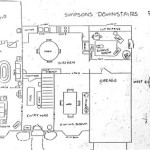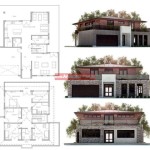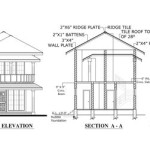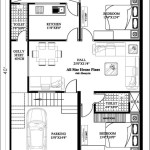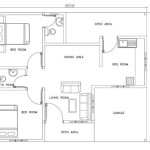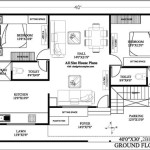Victorian Era Mansion Floor Plans: A Glimpse into Architectural Grandeur
The Victorian era, spanning from the mid-19th century to the early 20th century, witnessed a surge in architectural innovation and grandeur. Victorian mansions, with their ornate details, intricate layouts, and imposing presence, stand as testaments to the aesthetic sensibilities and social aspirations of the time. Delving into the floor plans of these architectural gems reveals a fascinating interplay of functionality, style, and the societal customs of the era.
The Grand Hallway and Centralized Design:
A defining characteristic of Victorian mansion floor plans is the prominent central hallway. This grand space, often lined with ornate wallpaper, elaborate moldings, and a sweeping staircase, served as the heart of the home. The layout was typically symmetrical, with rooms flanking the hallway on either side. This design not only facilitated efficient movement throughout the house but also created a sense of order and formality, reflecting the hierarchical structure of Victorian society. The central hallway provided a visual focal point, showcasing the wealth and status of the occupants, and served as a welcoming space for guests.
Functionally Distinct Rooms:
Victorian mansions were designed to reflect the complexities of Victorian life. The layout prioritized functionality, with each room serving a specific purpose. The formal drawing-room, intended for entertaining guests, would be adorned with grand furniture, elaborate draperies, and a fireplace. The dining room, often spacious and grand, was a significant social space for formal dinners and gatherings. Separate parlors and sitting rooms offered more intimate spaces for family and close friends. The bedrooms were located on upper floors, each with its own unique character and furnishings. Servants’ quarters were often located on the lower floors or within dedicated wings, accommodating the staff required to maintain the grand household.
A Focus on Detail and Decoration:
Beyond the functional layout, Victorian mansion floor plans embraced intricate details and elaborate decorations. Ornate fireplaces, intricate moldings, stained glass windows, and decorative ceilings all contributed to the visual richness of the homes. The use of natural light was emphasized, with large windows and skylights illuminating the spacious interiors. High ceilings added to the sense of grandeur, while elaborate staircases with decorative handrails functioned as both pathways and architectural statements. The interiors themselves were adorned with luxurious textiles, fine furniture, and artwork, reflecting the refined tastes and cultural aspirations of the Victorian era.
Exploring the floor plans of Victorian mansions provides insights into the social, cultural, and architectural trends of a bygone era. The grand hallways, functionally distinct rooms, and elaborate decorations offer glimpses into the lives of those who inhabited these architectural masterpieces. These plans not only reflect a specific time period but also speak to the enduring human fascination with beauty, comfort, and the expression of social status through the built environment. The legacy of Victorian mansion floor plans continues to inspire contemporary architects and homeowners, reminding us of the enduring power of design to shape our spaces and lives.

Untitled Victorian House Plans Mansion Floor Plan Homes

Good Victorian Mansion Floor Plans House Plan

Vintage Victorian House Plans 1879 Print Plainfield George La Baw F Mansion Floor Plan

Vintage House Plan Homes And 28 Victorian Plans From Palliser S Model Mansion Floor

Details Of Victorian Architecture Free Borrow And Streaming Internet Archive House Plans Homes

Historical Building Collectibles For Victorian House Plans Mansion Floor Plan Homes

Luxurious Victorian Home Plan Builder Ready 3225
Victorian House Plans Home Design Gml D 756 19255

Chapter Ii Large Town Houses Mansion Floor Plan Plans Vintage House

Victorian House Plans Floor The Designers

